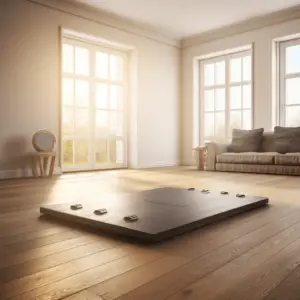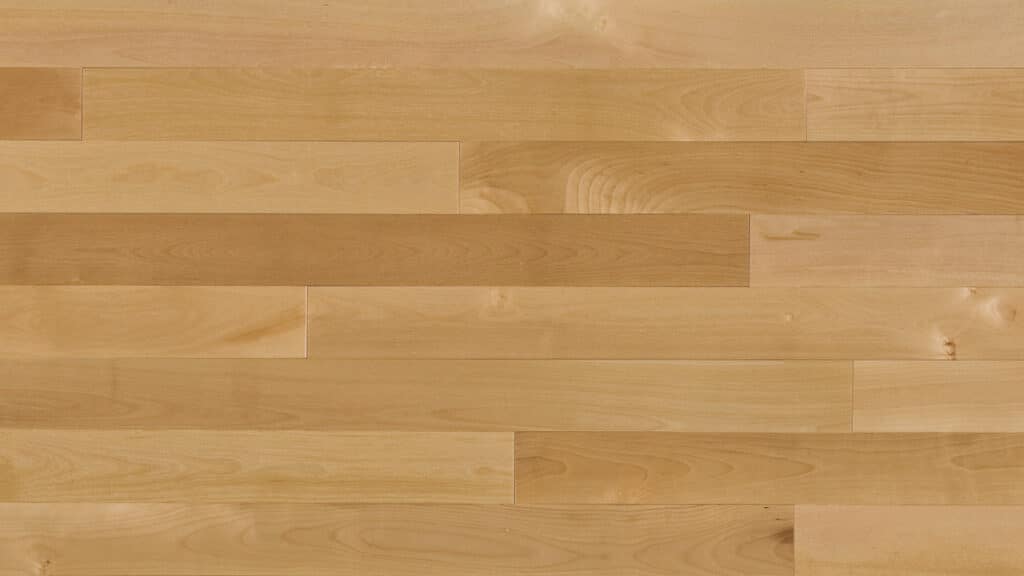Floor Weight Capacity, As a homeowner, asking questions like, “How much weight can a floor hold?” is an intelligent decision. Why? A building is more likely to collapse if you put more weight on a floor than it can support. This is especially true if you are not living on the ground floor.
Table of Contents
How Much Weight Can a Floor Hold?

The International Residential Code states that the weight limit for bedroom floors is 30 pounds (lb) per square foot. The weight limit for non-sleeping rooms is 40 pounds per square foot. The rule makes sure all structures can support the same amount of weight.
How To Determine The Maximum Weight That A Floor Can Support
You can figure out how much weight your room’s floor can support. Calculate the room’s total square footage to do this. Next, multiply the room’s square footage by the load capacity per square foot.
For example, a 200-square-foot living room floor can support 8,000 lbs of weight. The weight capacity drops to 6,000 lb for a bedroom of the same size.
Warning Signs Your Floor Can’t Support Much Weight
Here are several indicators that a floor can’t support much weight:
- Protruding Walls Down Stairs
The walls that are sticking out downstairs are a warning indicator. Weight problems in the upper apartments are the source of the walls’ bulging.
To fix the issue, immediate repair is required. You might also think about spreading out the load into different rooms.
- Weak Spots on the Floor
Weak spots on the floor are another indicator to watch for. That is a sign that the floor won’t support a heavy load.
The floor’s weak spots are visible in the soft areas. Avoid putting any heavy objects in such areas. You can also fix it.
- Floor Joist or Beam Damage
Before moving large pieces of furniture inside, look at the floor beam’s condition.
Examine the floor joists by removing the carpet. You can also see whether you can access them from the basement. Keep an eye out for termite activity, rots, or other symptoms of harm. They are signs of the floor’s weakness.
Another sign of a weak floor is a sagging or bouncing region.
- Uneven Floors
If the floors are uneven, it indicates that they can’t support much weight.
You might not notice an uneven floor immediately unless there is a clear slant.
Rolling a ball or pencil across the room will reveal any uneven flooring. Do it from all four angles. Then keep an eye out for any movement going in an unusual direction.
You cannot safely distribute heavy objects across the room if the floor is uneven. It would be advisable in this situation to stay out of the apartment.
Can You Set Up a Home Gym on a Second Floor Apartment?
Yes. You can have a gym in your second-floor apartment. Below are a few tips to help you maximize the amount of equipment you can safely install in the room:
Take Care of the Floor
You should take up any carpeting that is covering the floor.
The weight of the carpet and padding is substantial. Before removing the carpet, however, it is a good idea to speak with the complex manager or landlord.
Although there’s a good chance you won’t encounter any issues, you might be required to sign a document committing you to pay for replacing flooring.
Cover the floor after the carpet has been removed with 3/4″ plywood.
It will protect the floor and reduce any repair costs you could incur when you leave. The new subfloor should be fastened with wood screws.
It’s okay if you can not afford to install subflooring. However, it would be best if you didn’t skip using rubber matting.
The mats have two functions. They reduce any noise your neighbors might hear and shield the open floor from your exercise equipment.
Evenly Distribute Weight
It would help if you were mindful of a few things as you arrange the space.
Heavy equipment should be placed close to a wall. This is the area of the floor that offers the highest amount of support.
A load-bearing wall provides support for some second floors. The best location for your heaviest workout equipment, if this pertains to your room, is there.
Locate any portions of the floor that have multiple joists. Perhaps you should consult the building manager. You should install your squat or dumbbell racks here because the joists can easily hold the immense weight.
As a general guideline, avoid positioning heavy machinery in the middle of the space. It is the weakest area of the floor.
You can securely set up a home gym in your second-floor apartment by distributing the weight evenly.
What Does it Mean When the Floor Creaks?
Although annoying, noisy flooring typically does not indicate structural deterioration. Your floors are made up of numerous little parts, and there are numerous reasons why they could creak or groan. Some can be attributed to environmental factors, while others might reflect poor building techniques.
Levels of Humidity
If a floor was constructed in a region with considerable humidity change, the flooring may expand and contract depending on how dry the wood becomes. As a result of these actions, the nails holding the boards in place may eventually break free and generate noise when walked on. Although the squeakiness may be inconvenient, it is not uncommon and presents no danger.
Hardware & Building Materials
If your floors creak all year long, it can be because of poor building techniques. If the house builder utilized a nail gun instead of screws to attach the joists’ subfloor, this could result in noisy floors. This is because nails won’t hold as securely as screws do.
The floor may wear out more quickly if the subfloor is made of lower-quality building materials, such as particle board rather than plywood. These techniques risk creating tiny, noisy crevices between the joists and the subfloor.
How to Quiet the Creakiness of a Floor

There are actions you can take to minimize or eliminate those spaces. You can use short screws to reattach the subfloor to the hardwood floors. However, you should be cautious not to utilize screws long enough to pierce through the floor.
You can also try sliding a wooden shim or other dampening material into the space between the subfloor and the joist if you can access the floor joists from the basement and have someone walk on the floor above to find noisy locations.
Simple remedies like these can take care of minor problems, but if you worry about the integrity of your floors or see damage beyond your capacity to repair, consult a floor repair specialist.
Final Take
So, how much weight can a floor hold? A bedroom floor can handle 30 pounds per square foot, while the floor on other areas of a house can hold upto 40 pounds per square foot. However, the size of the room affects the floor’s overall weight-bearing capacity.
Make sure the weight is distributed equally throughout the space. Additionally, put bulky objects close to load-bearing walls. Maximize the space you have available as well. Lastly, watch for indications of weak floors and fix them.


